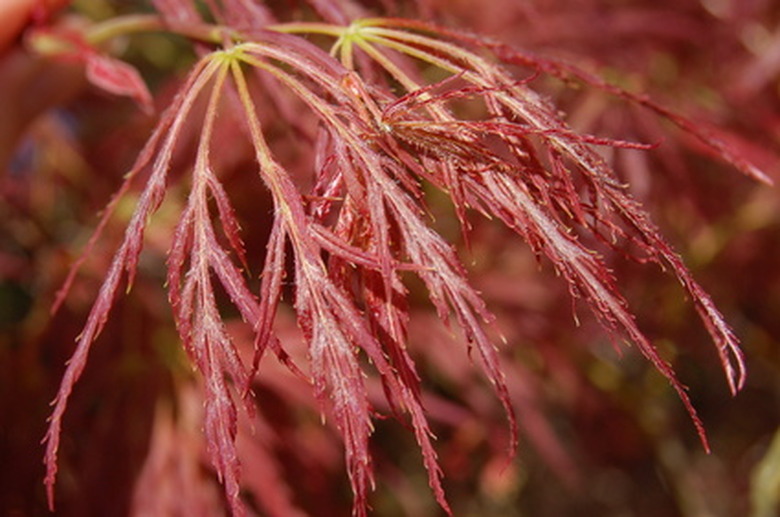The Best Japanese Maples To Grow In Dallas, Texas
Round-headed, small deciduous trees, certain Japanese maple (Acer palmatum) varieties provide attractive foliage colors and textures for gardens in Dallas. The most limiting factor for the perpetual health of these trees is the intensity and length of the long, hot summers. According to the American Horticultural Society, Japanese maple trees grow best where at least seven but no more than 120 days of temperatures above 86 degrees F occurs (AHS heat zones 8 to 2). Dallas sits on the border of heat zones 8 and 9. Plant these trees where acidic soils are moist, mulched to remain cool and shade protects the foliage from noon until dusk in summer.
Round-headed, small deciduous trees, certain Japanese maple (Acer palmatum) varieties provide attractive foliage colors and textures for gardens in Dallas. The most limiting factor for the perpetual health of these trees is the intensity and length of the long, hot summers. According to the American Horticultural Society, Japanese maple trees grow best where at least seven but no more than 120 days of temperatures above 86 degrees F occurs (AHS heat zones 8 to 2). Dallas sits on the border of heat zones 8 and 9. Plant these trees where acidic soils are moist, mulched to remain cool and shade protects the foliage from noon until dusk in summer.
Bloodgood
Throughout northeastern Texas, the Japanese maple variety "Bloodgood" is widely available in nurseries, according to Keith Hansen, a cooperative extension agent in nearby Smith County. The leaves on "Bloodgood" are deeply dissected with five lobes colored a deep red-purple color. In autumn the leaves turn bright red. This small tree is vigorous in growth and attains an upright shape, maturing at 12 to 15 feet tall and 10 to 15 feet wide. Hansen also notes that the red-purple leaf color holds well in the summer heat.
- Round-headed, small deciduous trees, certain Japanese maple (Acer palmatum) varieties provide attractive foliage colors and textures for gardens in Dallas.
- According to the American Horticultural Society, Japanese maple trees grow best where at least seven but no more than 120 days of temperatures above 86 degrees F occurs (AHS heat zones 8 to 2).
Crimson Queen
"Crimson Queen" also bears red-purple leaves that retain their color across the Texas summer. The arching twigs on this Japanese maple hold the leaves that are finely cut and lobed, looking very feathery in texture. It reaches 12 feet tall and 10 feet wide, displaying bright red foliage in autumn.
Fireglow
Very similar in qualities to "Bloodgood," the selection "Fireglow" matures at 13 to 15 feet tall and 10 to 15 feet wide. The leaves are a wine-burgundy and hold up well across the summertime without fading. This particular tree attains orange-red and scarlet hues in autumn.
Shishigashira
Growing 12 feet tall and 10 feet wide, "Shishigashira" (also sold as "Ribesifolium") develops short gray twigs that bear green leaves in dense clusters. The five-lobed leaves are small and crinkled and fill the tree branches in a picturesque manner that evokes a sense of Asian sculpture. The autumn foliage color ranges from golden-orange to orange-red and tends to change rather late in fall compared to other deciduous trees. This tree is sometimes referred to as the "lion's mane maple."
- "Crimson Queen" also bears red-purple leaves that retain their color across the Texas summer.
References
- "A-Z Encyclopedia of Garden Plants"; Christopher Brickell and H. Marc Cathey, eds.; 2004
- Texas A&M University: Outstanding Landscape Plants for Northeast Texas
